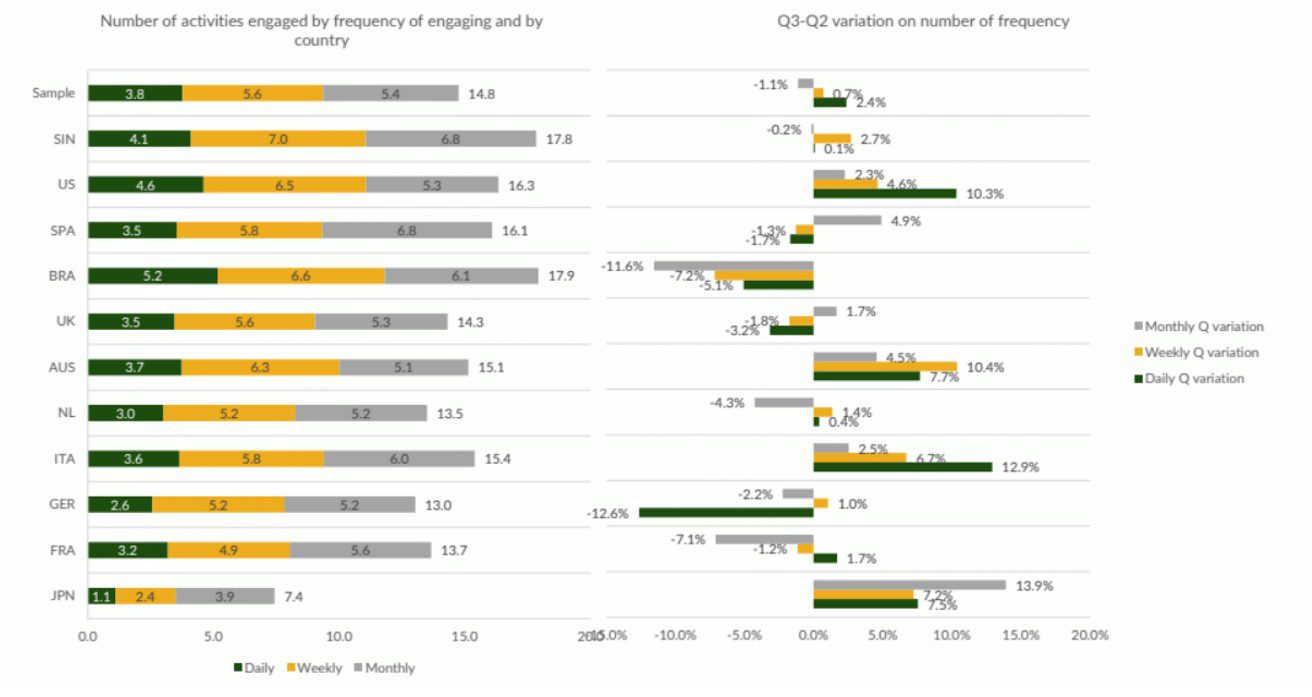
PYMNTS’ December ConnectedEconomy™ Index, “How the World Does Digital,” found that in Germany, weaker overall retail demand drove fewer online transactions in Q3. In fact, the country experienced the largest daily connectivity drop of any we studied.
For this comprehensive report, PYMNTS surveyed more than 30,000 consumers within 11 countries, measuring how (and how often) they incorporate digital tools, transactions and other activities into their daily lives.
Focused on the third quarter of 2022, this edition of the index notes that globally, engagement in the ConnectedEconomy™ overall rose for routine activities such as video streaming, using wearables and mobile banking. These steady gains in daily activities indicate continued future growth for consumers’ digital transformation worldwide. Of consumers surveyed, 65% engage in one or more of the 37 digital activities the index tracks each and every day.
While day-to-day digital connectivity grew worldwide, Germany’s engagement in online activities dropped notably, a shift partially driven by local shoppers’ reduced retail spending. The country’s consumers dialed back digital retail spending by 6% quarter-over-quarter, a stark shift from September, when 20% of all in-store transactions were made with a digital wallet. In total, we measured a 13% drop in the number of daily activities that consumers in Germany participated in. This drop had a significant impact on Germany’s transactional activities index score, and the country was ultimately second to Brazil in overall declines.

There are some anecdotal signs of a digital contraction as well. Last month, German neobank Ruuky announced it was filing for bankruptcy after operating for three years, despite a strong social media following. The decision came after Ruuky, with its business model directed towards teenaged customers, failed to secure further investment funding.
Germany consumers decreased Q3 digital spend, though, can be more directly traced to the country’s retail numbers. Their Federal Statistical Office in October reported a 2.8% monthly decline compared to the month prior. Then in November, German department store chain Galeria Karstadt Kaufhof filed for bankruptcy protection, announcing it planned to close more than 30% of its brick-and-mortar locations. The chain’s CEO has blamed the Ukraine war, soaring energy costs and weak consumer sentiment for the closures.
Perhaps muddying the digital waters for Germany as well are two related scandals rocking the country’s financial sector. Echoing the FTX saga unfolding in the U.S., German prosecutors have accused senior executives who ran now-defunct payment processing company Wirecard of criminal racketeering and fraud. Revelations surrounding Wirecard also led to the head of Germany’s anti-money laundering office stepping down in December. The resignation came after months of local media reports on the 100,000 unprocessed suspicious activity reports dating back more than two years the office withheld from the Paris-based Financial Action Task Force.
It is difficult to declare Germany’s digital connectivity dip permanent off of the performance of a single quarter. Given the country’s past high rate of online engagement, this contraction could well be an atypical hiccup in their overall digital trajectory. Patience may be in order, as future index reports will almost certainly reveal more.